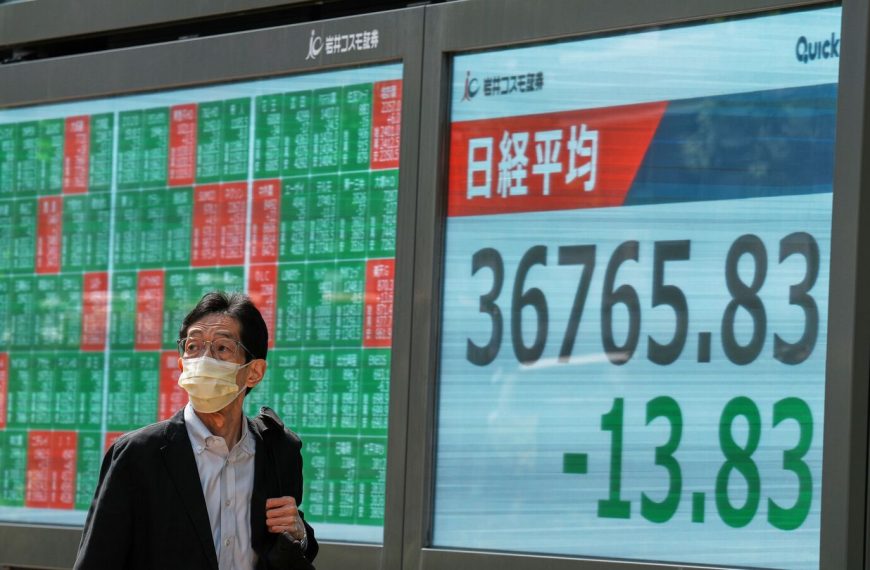The age-old saying “Sell in May and go away” has been a staple in investment circles for years. Traditionally, this phrase suggested that investors should exit the market during May, as it often heralded a downturn, particularly influenced by foreign investors selling off stocks. However, recent trends tell a different story, prompting investors to reconsider the relevance of this adage in today’s economic landscape.
May Market Performance: A Shift in Trends
Over the last decade, the performance of equity markets during May has shown remarkable resilience. Since 2013, the BSE Sensex has experienced negative returns in May only twice. In the U.S., the S&P 500 has similarly fared well, recording negative returns just once in the past twelve years.
- BSE Sensex: Negative returns twice since 2013
- S&P 500: Negative returns once in twelve years
The Traditional Shift to Fixed Income
Historically, investors would typically reallocate their resources from equities to fixed-income securities during the month of May, with plans to re-enter the stock market later in the year. This year, however, the landscape appears different, especially with rising U.S. Treasury yields and a contraction in the U.S. economy during the first quarter of 2025.
The U.S. economy’s contraction marked its first decline since the first quarter of 2022, signaling potential reasons for foreign investors to pivot from equities to bonds. This shift not only reflects changing market dynamics but also the increasing volatility driven by geopolitical tensions and protective trade policies.
Geopolitical Tensions and Economic Concerns
The backdrop of global geopolitical uncertainty adds another layer of complexity. Rising tensions in regions like the Middle East, the ongoing trade friction between the U.S. and China, and the fraught situation between India and Pakistan create an atmosphere of heightened risk. The Reserve Bank of India has identified these geopolitical issues as significant threats to financial stability.
Furthermore, the International Monetary Fund (IMF) has highlighted how geopolitical risks can lead to asset price fluctuations due to increased uncertainty and disruption in trade.
Corporate Earnings Under Pressure
On the corporate front, earnings within Indian firms are facing challenges, entering a cyclical downturn. A recent report from Motilal Oswal Financial Services revealed that in Q3 FY25, the ratio of earnings upgrades to downgrades stood at 0.3, the worst performance in over five years.
- Earnings Downgrade Ratio: 0.3 (for every upgrade, nearly 4 downgrades)
- Sectors Performing Decently: BFSI, healthcare, and telecom
These headwinds are likely to dampen future corporate earnings, particularly if protective tariffs remain in place, potentially impacting sectors reliant on exports such as agriculture, automotive, and IT.
Valuation Concerns in Indian Markets
Currently, the MSCI India Index trades at a trailing Price to Earnings (P/E) ratio of about 25, significantly higher than the 15 and 21 ratios of the MSCI Emerging Markets and MSCI World Index, respectively. The increase in valuations has not gone unnoticed, especially given the BSE Sensex’s 6% rise in April 2025.
- MSCI India Index P/E Ratio: ~25
- MSCI Emerging Markets P/E Ratio: ~15
- MSCI World Index P/E Ratio: ~21
Strategic Investment Approaches
For investors eyeing opportunities in the Indian equity markets, now might be the time to adopt a more cautious approach. Consider utilizing significant market declines for staggered lump-sum or Systematic Investment Plans (SIPs), which can help mitigate volatility through disciplined investing.
Core & Satellite Investment Strategy
- Core Investments (65-70%): Focus on stable, long-term growth; consider large-cap and flexi-cap funds.
- Satellite Investments (30-35%): Allocate to higher-risk, higher-reward investments such as mid-cap and aggressive hybrid funds.
Conclusion: Navigating Market Uncertainty
As the financial landscape evolves, staying grounded in your investment strategy is crucial. While the long-term outlook for India’s economy remains positive, it’s essential to manage expectations and align your investments with your risk profile and financial goals.
In these uncertain times, thoughtful investment could lead to steady growth. Remember, patience and discipline in your investment approach will serve you well as you navigate the complexities of today’s market.
Happy investing!











